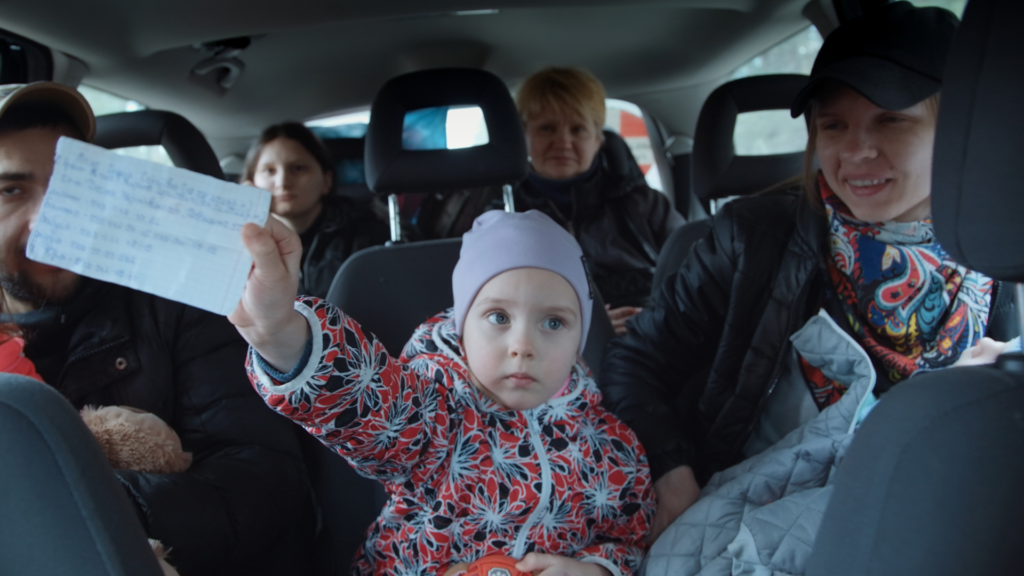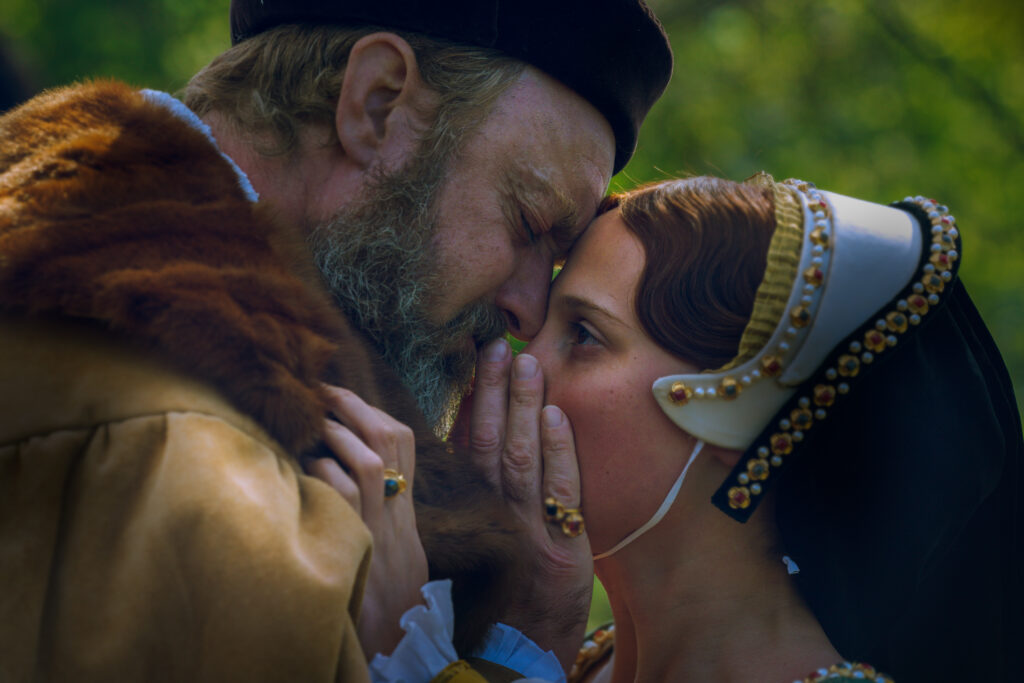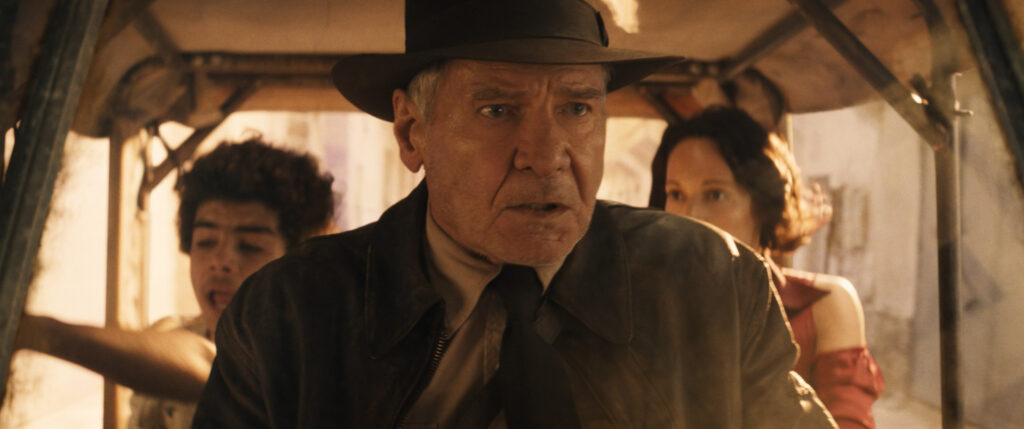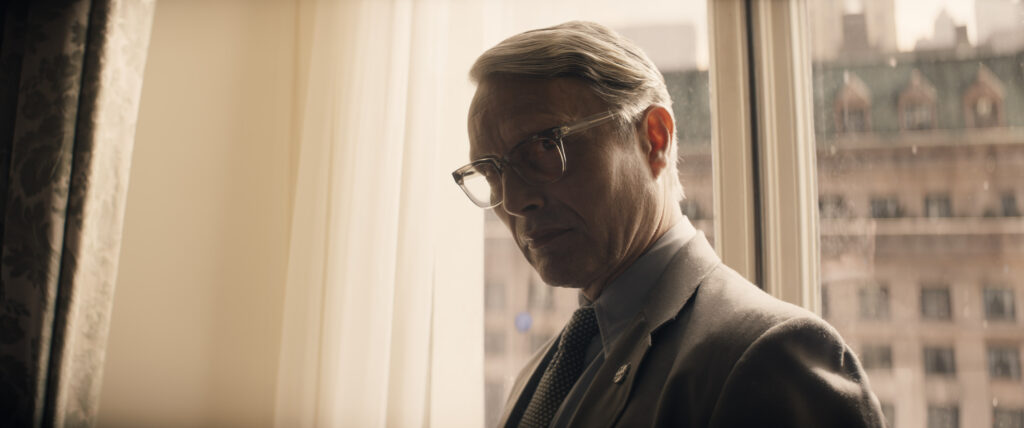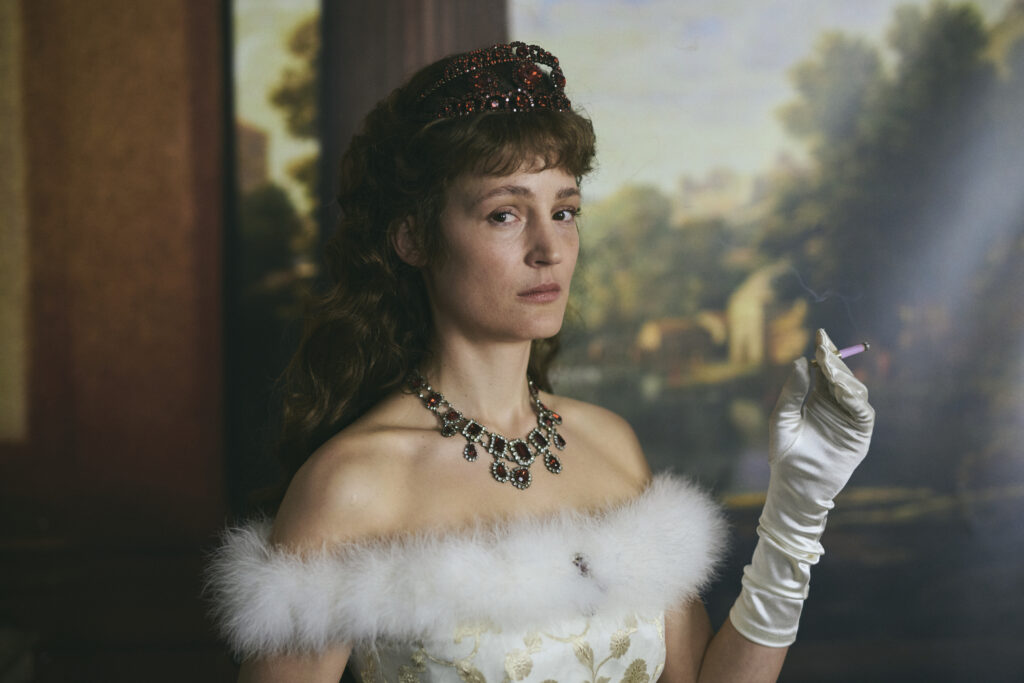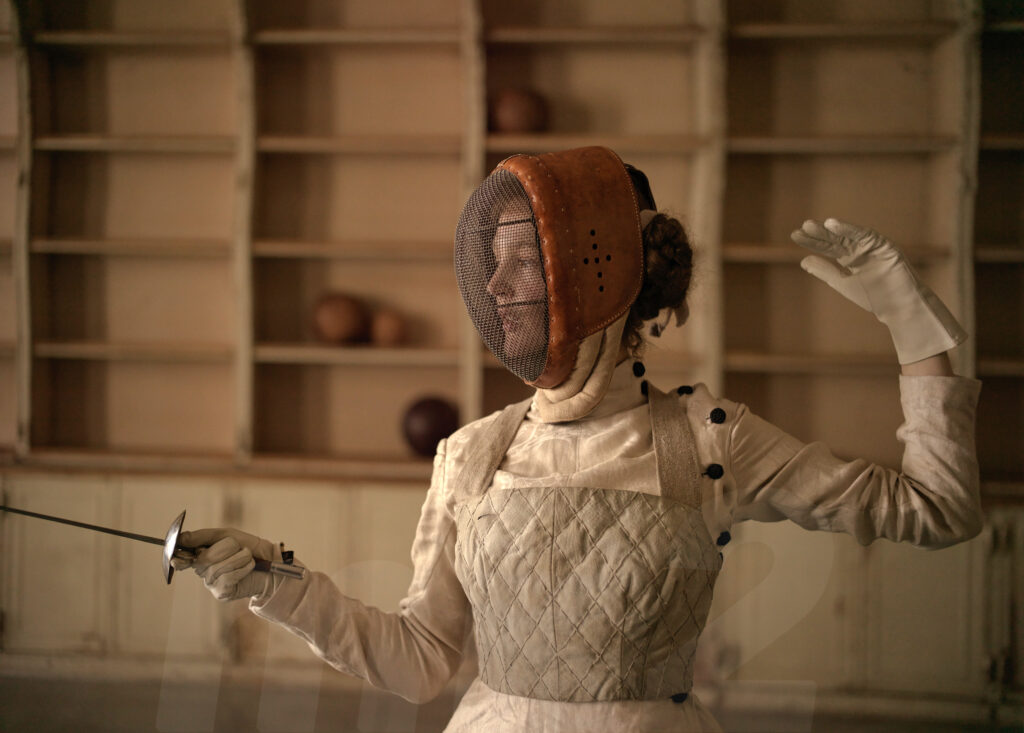October 9, 2023
by Carla Hay
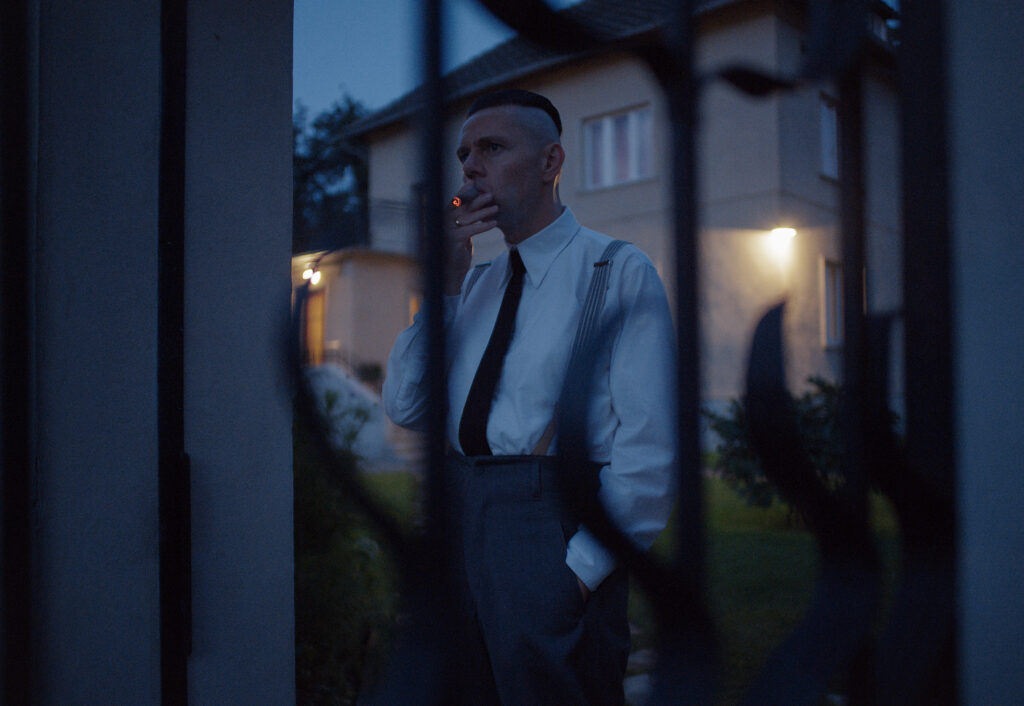
Directed by Jonathan Glazer
German, Polish and Yiddish with subtitles
Culture Representation: Taking place in Poland, in 1943, the dramatic film “The Zone of Interest” (based loosely on the novel of the same name) features an all-white group of people representing the working-class and middle-class.
Culture Clash: Auschwitz concentration camp commandant/Nazi official Rudolf Höss and his family live with casual indifference near the concentration camp, where about 990,000 Jewish people were murdered during his reign of terror.
Culture Audience: “The Zone of Interest” will appeal mainly to people who are fans of filmmaker Jonathan Glazer and people who are interested in unconventional Holocaust movies.

Most Holocaust movies are shown from the perspectives of the victims or the rescuers. “The Zone of Interest” is told from the perspective of a Nazi leader who thought his job of committing genocide on Jewish people was perfectly normal. It’s a different type of Holocaust movie because it shows with unflinching clarity how the shameful horrors of the Holocaust were casually accepted by Nazi families, such as those of commandant Rudolf Höss. Concentration camps were treated like factories.
Written and directed by Jonathan Glazer, “The Zone of Interest” had its world premiere at the 2023 Cannes Film Festival, where it won the Grand Prix Award (which is the equivalent of second place) and the FIPRESCI Prize. “The Zone of Interest” has since made the rounds at other films in 2023, including the Telluride Film Festival, the Toronto International Film Festival, and the New York Film Festival. “The Zone of Interest” is loosely based on Martin Amis’ 2014 novel of the same name.
The title refers to the term “used by the Nazi SS to describe the 40-square-kilometer area immediately surrounding the Auschwitz concentration camp on the outskirts of Oświęcim, Poland,” according to the production notes for “The Zone of Interest.” Approximately 990,000 Jewish people died in Auschwitz, which existed from 1940 to 1945. In real life, Höss was the longest-serving commandant of Auschwitz from 1940 to 1943 and from 1944 to 1945. He was eventually convicted of war crimes in 1947, the year that he died at age 45 by an execution hanging.
“The Zone of Interest” takes place in 1943, before Rudolf (played by Christian Friedel) is transferred to another concentration camp. On the surface, “The Zone of Interest” looks like it’s just about the mundane activities of a family. But the movie intends to show how deceptively “normal” people who commit heinous crimes can look, especially when they are surrounded by family members. An early scene in the movie shows Rudolf having a carefree picnic with members of his family near a lake.
Rudolf’s family members who are shown in the movie include his moody wife Hedwig Höss (played by Sandra Hüller), who is kind and loving to her children but rude and demeaning to the family’s housekeepers. Rudolf and Hedwig have five children, ranging in ages from infancy to about 14 years old. They are son Claus Höss (played by Johann Karthaus); son Hans Höss (played by Luis Noah Witte); daughter Inge-Brigit Höss (played by Nele Ahrensmeier); daughter Heideraud Höss (played by Lili Falk) and baby daughter Annagret Höss (played by Anastazja Drobniak, Cecylia Pękala and Kalman Wilson).
Later, Hedwig’s mother Lina Hensel (played by Imogen Kogge) comes to visit. Hedwig tells Lina in a bragging tone of voice, “Rudi says I’m the queen of Auschwitz.” It’s one of a few scenes in the movie where the Nazi followers show their antisemitism like a badge of honor. A cliché movie would have had the Nazis constantly spewing verbal hatred of Jewish people. “The Zone of Interest” more accurately shows that evil bigots don’t often say their most heinous prejudicial thoughts out loud several times a day.
Most of the “The Zone of Interest” takes place in the medium-sized home of the Höss family, where they live close to the death camp known as Auschwitz. The movie was filmed in the same vicinity where the real Auschwitz existed. Rudolf and Hedwig have no problem with the idea that their family is living near a place dedicated to torturing and murdering innocent people. There’s a disturbing scene where the Höss house is shown in a wide shot on a very sunny day that looks perfect—except in the background are the unmistakable smoke fumes of gas chambers being operated at Auschwitz.
The Jewish victims of these atrocities are never seen on screen in “The Zone of Interest.” It’s the movie’s way of saying that when these Nazi perpetrators were at home, Jewish people were “out of sight, out of mind.” However, Rudolf can’t help but take remnants of his work into his home. In one scene, he’s hunched over a bathroom sink as he blows black ash out of his nose into the sink. In another bathroom scene, he carefully washes his penis out of view of his family, with the obvious implication that he committed the type of rape that leaves damning stains.
Another scene shows a close-up of Rudolf standing up at work with only his body in the screen frame. But in the background are the harrowing sounds of people screaming and gunshots. It’s left up to “The Zone of Interest” viewers to speculate what type of crimes against humanity were being committed out of view. Much of “The Zone of Interest” is filmed as if it’s a cinéma vérité-styled documentary about a “typical” family in Poland at this time.
During another scene in the movie, Hedwig is talking at a kitchen table with a few visiting female friends, who are engaging in some gossip. In the next room, Rudolf and some of his SS colleagues are seated at table with their own conversation that is much more sinister: They are discussing the best way to engineer and place gas chamber equipment.
The Nazi men also talk about gas chamber procedures: “burn, cool, unload, reload.” They discuss it as if they’re talking about a regular assembly line routine at a factory, not burning people to death, letting their dead bodies cool off, dumping the bodies, and then bringing in more innocent people to murder in a gas chamber. The Höss family dog is treated with more kindness and respect than these hateful bigots ever had for the Jewish people they slaughtered.
There’s another scene where Rudolf makes a phone call to berate someone into making sure that the lilac bushes at Auschwitz get special care. He makes a threat to say that anyone who makes the lilac bushes “bleed” will be punished. (In other words: “Don’t get any blood on the lilac bushes.”) The Höss family home has a beautiful backyard garden, where the flowers get more care than the people who are starved, tortured and murdered in Auschwitz. It’s another example of how Jewish people’s lives are disregarded by Adolf Hitler devotees such as Rudolf and Hedwig.
Many movies about the Holocaust would want to recreate these disgusting crimes. However, “The Zone of Interest” effectively shakes people up into remembering that the Holocaust was allowed to continue for as long as it did because it was considered a “normal” way of life for many non-Jewish people who chose to look the other way if they didn’t directly participate in this antisemitic genocide. It’s the movie’s reminder that the Holocaust didn’t happen suddenly but in increments. Jewish people were targeted, their rights were gradually taken away, and then they were left vulnerable to being harmed in the Holocaust.
Not everyone in the movie sides overtly sides with the Nazis. The Höss children seem to be completely oblivious to the fact that they are living next to an antisemitic murder facility, although it’s implied that their parents are teaching these children to hate Jewish people. The Höss family has two housekeepers in their late teens or early 20s: meek and passive Marta (played by Martyna Poznańska) gets most of Hedwig’s wrath, while sturdy and reliable Aniela (played by Zuzanna Kobiela) is quietly rebellious and secretly helps feed the starving Jewish people at the concentration camp.
At night, Aniela rides her bicycle to the concentration camp to drop off apples in the dirt where the laborers will find them. She also drops apples into the underground bunker prisons where many of the captured people are being held. Aniela knows which areas to go where she won’t be seen by the soldiers keeping guard. When she’s doing these secretive activities, the movie shows her in night vision-type lighting, as if she’s under secret surveillance by a camera with night vision.
Rudolf and Hedwig talk about things that seem ordinary and typical for people in a middle-class household. Hedwig mentions that she’d like him to take her to a spa in Italy. Rudolf is seen reading a children’s book to one of his daughters in bed. It’s not exactly the movie saying, “Nazis: They’re just like us,” but it’s the movie’s way of letting viewers know that people who believe in this extreme bigotry don’t look like monsters on the outside. They could be the harmless-looking people next door.
In a scene toward the end of movie, Rudolf is standing alone near a stairwell of a government building when he dry heaves and spits on the ground. It’s a scene reminiscent of near the end of the 2012 Oscar-nominated documentary “The Act of Killing,” in which former death squad leader Anwar Congo, who participated in the Indonesian mass killings of 1965 to 1966, begins uncontrollably dry wretching, as if he’s overwhelmed by the memories of what his atrocities looked like and smelled like. In “The Zone of Interest,” a present-day scene at the Auschwitz-Birkenau Memorial and Museum shows some of the devastating museum displays that have evidence of the many lives lost in the Holocaust.
Friedel and Hüller give capable performances, but “The Zone of Interest” doesn’t have big, showoff acting for a reason: The point of the movie is not to be about scene-stealing dramatics or to have cartoonish villains. It’s about showing how extraordinary cruelty can be condoned in plain sight and be rendered “ordinary” by the people who enable it to happen.
A24 will release “The Zone of Interest” in select U.S. cinemas on December 8, 2023.



